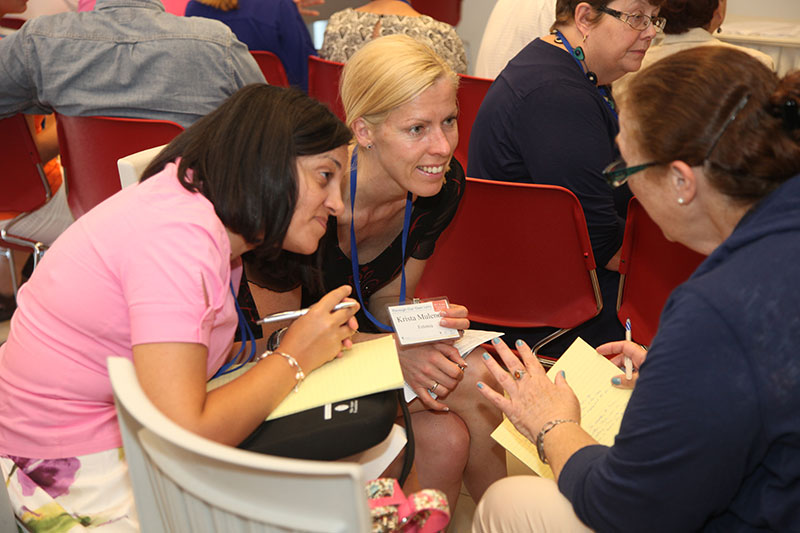
Educators at a teacher-training session at the International School
Yesterday the annual international conference of Yad Vashem's research institute opened. This conference, the 18th since they began, looks at various issues connected to hiding, sheltering and borrowed identities as means of rescue during the Holocaust.
In the opening session, Yad Vashem Chairman Avner Shalev noted that Holocaust research has undergone different phases, when varying questions were at the forefront of study. Now, questions relating to the individuals’ actions are at the center. He noted that the activity of Jews during the Holocaust was so important to all the rescue efforts and that the sessions ahead would examine Jewish efforts at rescue as individuals and groups.
Prof. Dan Michman, the chief historian of Yad Vashem, expanded on Shalev's remarks regarding the trajectory of research, and added that the study of the Righteous Among the Nations has also come into being in recent years. However, he said he disagreed with those who attributed all of the Righteous' motivations to altruism. While this was certainly the case in some instances, Michman noted that this does not provide a convincing explanation for those who rescued Jews despite being antisemites, or those who acted out of ideological or religious reasons. He also noted that one cannot speak of a "national character" when it comes to rescue, at least not based on the Righteous Among the Nations, and looked forward to the next three days as an opportunity to shed more light both on the Righteous, as well as on Jewish efforts and involvement in rescue, failed attempts at rescue, and more.
Dr. David Silberklang reminded attendees at the full auditorium that during the Holocaust not everyone behaved as one would expect. People behaved in unpredictable ways - for the good and the bad - and Jews could not predict what to expect if they turned to someone for help.
It should be an interesting few days.









